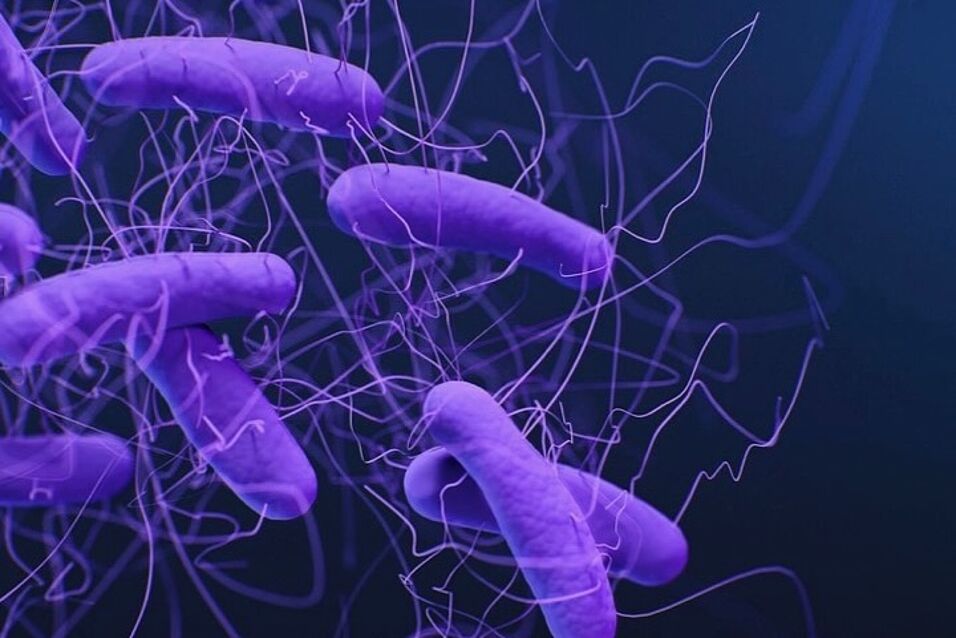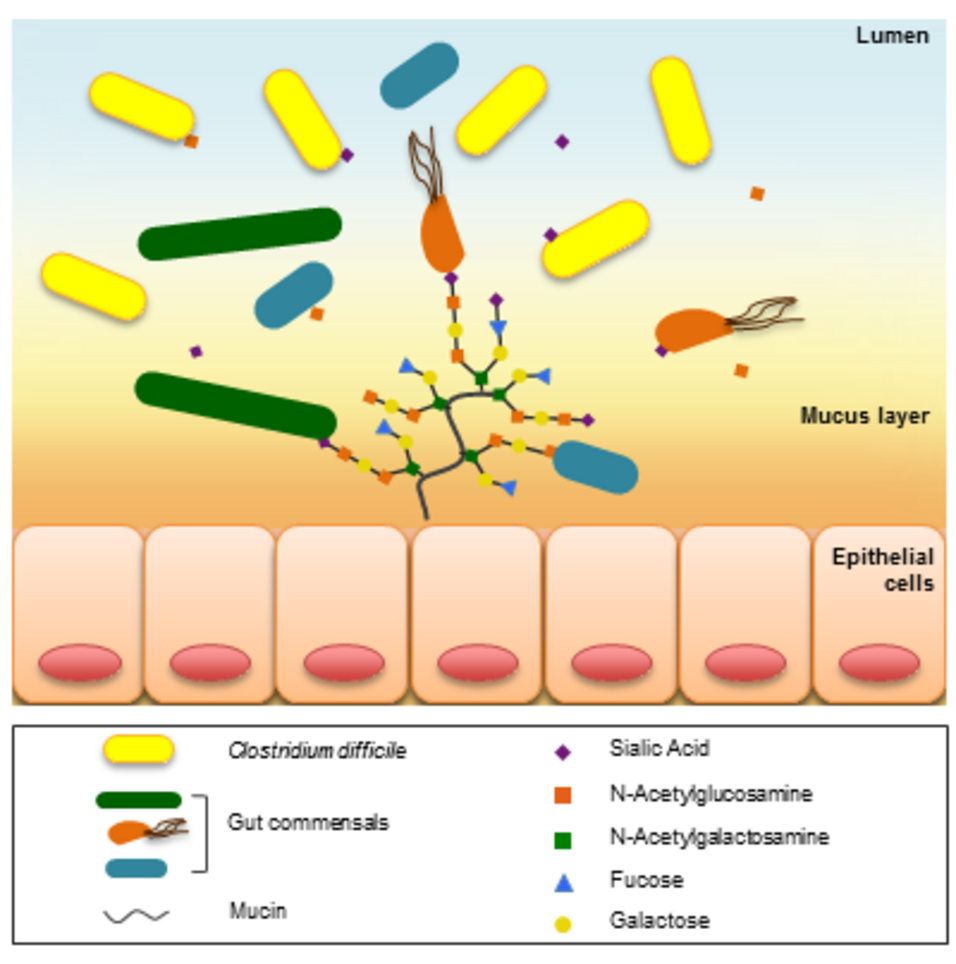Perturbations of the gut microbiota, as occur upon antibiotic administration, lead to loss of CR and an increased susceptibility to infections by enteropathogens. Some of the mechanisms of CR are known and involve the production of antimicrobial compounds with narrow activity against pathogens, the production of microbial associated molecular patterns (MAMPs) that stimulate the production of adaptive or innate effectors by the host immune system, or by exhaustion of limited nutrient sources.
This project focuses on competition for host-derived nutrients as an important mechanism by which the colonic microbiota can suppress the growth of many gut pathogens. We are particularly interested in the pathogen Clostridium difficile, nowadays the most common cause of enteric infections associated with antibiotic therapy in developed countries. We seek to understand how C. difficile utilizes host mucosal sugars to establish and survive in the gut and how the presence of commensal bacteria competing for these mucosal sugars modify the outcome of C. difficile infections.
Using a combination of techniques such as genetic tools, in vivo colonization assays, and stable isotope probing (SIP) combined with fluorescence in situ hybridization (FISH) and high resolution secondary ion mass spectrometry (NanoSIMS), we aim to: 1) elucidate the role of mucosal sugars catabolism in C. difficile expansion in the gut; 2) identify commensal members of the gut microbiota that can efficiently catabolize these mucosal sugars in vivo; and 3) evaluate the ability of the identified organisms to outcompete C. difficile. Findings from this work will contribute to elucidate the mechanisms by which the gut microbiota prevents C. difficile colonization and to identify members of the gut microbiota that can be the basis for an effective, safe and standardized treatment to cure a C. difficile infection.
This project has received funding from the European Union’s Horizon 2020 Framework Programme for Research and Innovation under grant agreement No. 658718.
Investigated by:
- Pereira F
- Sziranyi B
- Berry D


